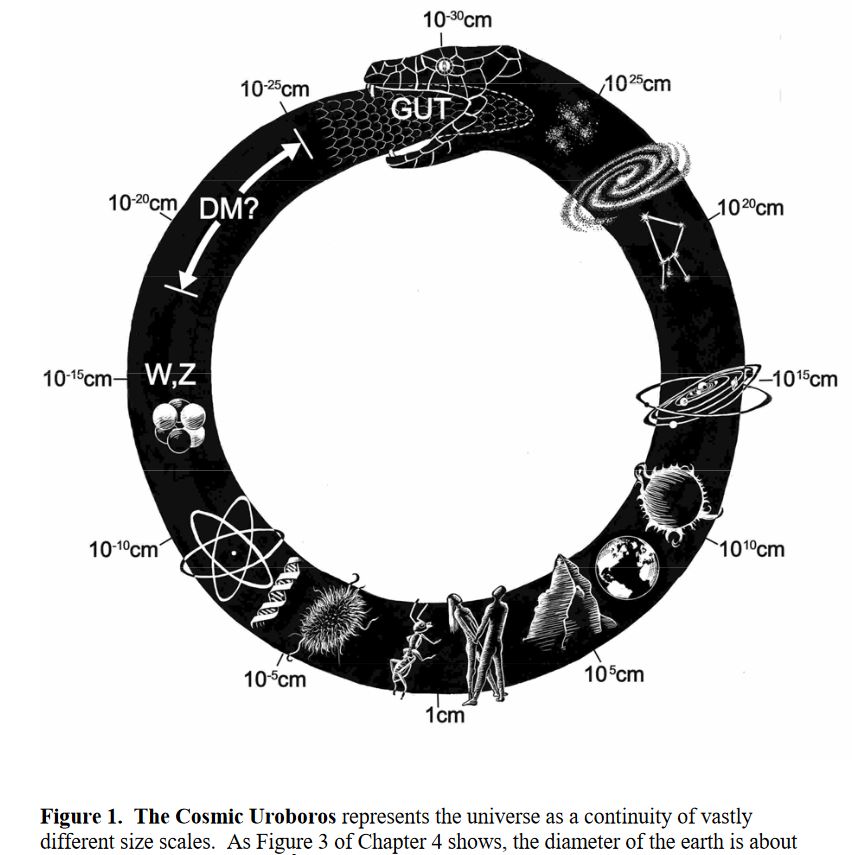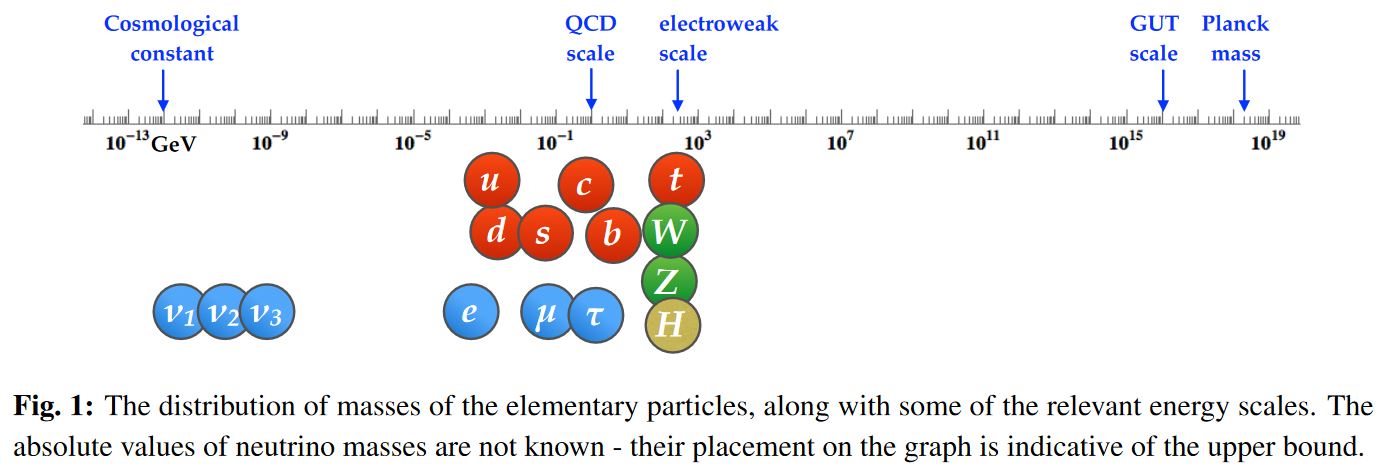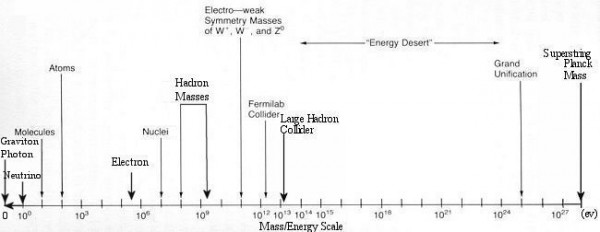nLab observable universe
under construction
This entry is about the notion of the portion of the universe in physics that is observable by humans. For other notions of universe, see at universe.
Contents
Idea
On the very largest scales observable in astrophysical experiment, the cosmos is well described by an FRW model with cosmological constant (but see at inhomogeneous cosmology), with plenty of dark matter and with primordial cosmic inflation (called the -CDM “concordance model of cosmology”). A horizon in there and everything on smaller scales is the observable universe.
There has never been a reason to assume that beyond this cosmic horizon visible to us today, the cosmos would not extend further. In fact in the simple FRW models with positive cosmological constant, the spacetime manifold is not a closed manifold and extends indefinitely beyond our observable horizon. This is directly analogous to the ancient mariner who would stand on the deck of his ship and see a few miles of ocean around him. That was the world within his horizon, but there was no telling what lay beyond.
Therefore it is important to distinguish the observable universe from the universe as such. Unfortunately, intellectual laziness tended to ignore this distinction and at some point some people who said “universe” to mean just the stretch of our cosmic horizon felt the need to have a new term for whatever may lie beyond. For better or worse, that new term has become wide-spread these days and is “multiverse”.
The main scientific observation that goes with this is the observation that cosmic inflation – for which there is by now excellent and ever increasing experimental evidence that indeed it happened – does, at least by the simple method which is currently used to model it, naturally predict a large ambient space in which local regions stochastically undergo inflationary expansion. This scenario of chaotic inflation has in fact been singled out as the most likely one (within the standard model) by the bicep2-experiment in 2014.
In any case, as far as the observable universe is concerned, two facts are worth noticing:
-
the observable universe alone is already pretty darn large, see the various discussion of its scales below;
-
Giordano Bruno‘s old intuition remains plausible even at the largest scales: possibly the full xyz-verse beyond our present horizon is vastly larger still… and we may never know.


graphics taken from Primack Chapter 6
Recent measurements (c. 2001) by a number of ground-based and balloon-based experiments, including MAT/TOCO, Boomerang, Maxima, and DASI, have shown that the brightest spots are about 1 degree across. Thus the universe was known to be flat to within about 15% accuracy prior to the WMAP results. WMAP has confirmed this result with very high accuracy and precision. We now know that the universe is flat with only a 2% margin of error
energy and length scales in the observable universe (from cosmic scales, over fundamental particle-masses around the electroweak symmetry breaking to GUT scale and Planck scale):

graphics grabbed from Zupan 19

graphics grabbed from here
Related entries
References
General
- Wikipedia Observable universe
Popular introduction:
- Carl Sagan, Cosmos, Ballantine Books (1985) [Wikipedia entry, GoogleBooks entry]
A visualization of the scales in the solar system are in
Accurate visualization of many astronomical phenomena is at
Zoom through the full range of scales:
Visualization of the speed of light in relation to distances in the solar system:
A visualization of the big observable structures in the universe, drawn to scale, is in
- American Museum of Natural History, The known universe (video)
Visualization of observed local galaxy clusters and voids
-
Phys.org, Astronomers map vast void in our cosmic neighborhood (2019) [web]
-
A. Dupuy, H. M. Courtois: Dynamic cosmography of the local Universe: Laniakea and five more watershed superclusters , Astronony & Astrophysics 678 (2023) A176 [doi:10.1051/0004-6361/202346802]
Comuter simulation of the structure formation (see there for more) of these is at
On scales
- Joel Primack, The View from the Center of the Universe Chapter 6: What Size is the Universe? The Cosmic Uroboros (pdf, pdf)
Pointers to the past and future timeline of the observable universe are collected in
Survey and exposition of aspects of organizing the large-scale structure of the universe are at
More technical discussion of cosmic horizons contains
- George Ellis, T. Rothman: Lost Horizons, 1993 (scribd)
A sketch of a comprehensive picture had been proposed in
Cosmic topology
On the possibility that spacetime is a manifold of non-trivial topology (cosmic topology):
-
Marc Lachièze-Rey , Jean-Pierre Luminet, Cosmic Topology, Phys. Rept. 254 (1995) 135-214 [arXiv:gr-qc/9605010, doi:10.1016/0370-1573(94)00085-H]
-
Neil J. Cornish, David N. Spergel, Glenn D. Starkman, Eiichiro Komatsu, Constraining the Topology of the Universe, Phys. Rev. Lett. 92 (2004) 201302 [arXiv:astro-ph/0310233, doi:10.1103/PhysRevLett.92.201302]
-
Jean-Pierre Luminet: Cosmic Topology, Scholarpedia (2015) [doi:10.4249/scholarpedia.31544]
-
Jean-Pierre Luminet, The Status of Cosmic Topology after Planck Data, Universe 2 1 (2016) 1 [doi:10.3390/universe2010001]
-
Jaspreet Sandhu, Cosmic Topology [arXiv:1612.04157]
-
Yashar Akrami et al., Promise of Future Searches for Cosmic Topology, Phys. Rev. Lett. 132 17 (2024) 171501 [arXiv:2210.11426, doi:10.1103/PhysRevLett.132.171501]
-
The Universe’s Topology May Not Be Simple, Physics 17 74 (2024)
Last revised on July 2, 2025 at 18:08:44. See the history of this page for a list of all contributions to it.